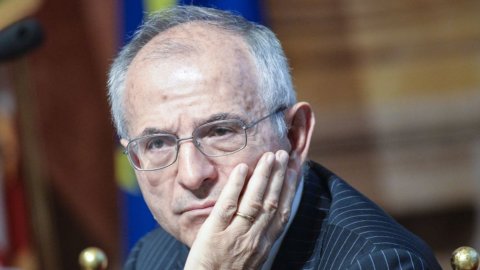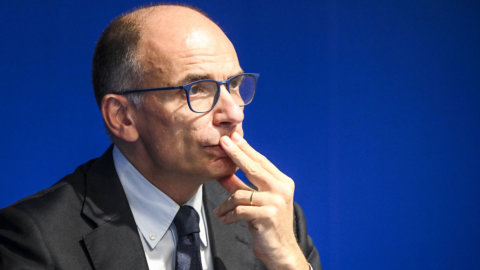Beppe Scienza, a mathematics professor and a great expert in savings and pension finance, recognized my independence, seriousness and honesty, recalling the period in which I was head of theMediobanca Research Area (from the early 70s to 2015) alluding in particular to the investigation into mutual funds which has now ceased (see Il Fatto, 25/1/2021). I have to thank him, but I feel the need to clarify the reasons why Cuccia's Mediobanca promoted those publications and "kept" a study area dedicated to businesses. The "classic" banks' research offices were used to donate some books to customers; often these were artistic themes (sculpture and painting), sometimes aids to stock market operators (summary of share prices, dividends, company balance sheet data, and the like). Many banks advertised by financing the Giro d'Italia. Enrico Cuccia distinguished himself because he wanted to have a "unique" in this field too. His research office had on the one hand to convey an image of competence, on the other to serve as an aid and support to the operational activity; that of the bank and that of the general public.
But in a bank, customer accounts must be kept confidential and for this reason the Mediobanca research office had to work and publish sensitive issues using only its own resources. On the one hand, the analysts of the Research Area presented themselves as Mediobanca staff, albeit rigidly separated from the business; on the other hand, the bank benefited both from the image effect produced by the publications (much higher than the value of the space that the new editions occupied in the newspapers), and from the wealth of data collected. The peculiarity was that the job was being done (and correctly perceived by the public) in total autonomy. We reached the borderline cases of entrepreneurs, such as Caprotti and Berlusconi, who didn't usually give their accounts to the bank, but only agreed to give them to the Research Area, certain that they would not leave the drawers of the analysts. The activity covered vast areas of the national economy and gave life to works that Mediobanca did not keep exclusively for itself, but made available to all by publishing them. In this way the transparency of the system increased and there was also a contribution to financial education. The return of this "advertising" activity was therefore an image of absolute competence, correctness and innovative capacity: we go to those who know how and can do. It resembled a monopoly, but it was not such, precisely, because there was no exclusivity.
The study area (R&D and the Study Office) has introduced numerous innovations. In my period I remember the classification and interpretation of financial statements according to criteria used by international finance, the successive margins, the levels of liquidity, the identification of debts often obscured in official documents, the disclosure of corporate control structures long before the 'issue of current regulations, sector studies, innovative techniques for calculating bond yields, the creation of a system of stock market indicators where securities were weighted on the basis of floating capital (a criterion later imitated by all international providers of stock market indices), until the discovery of the "Fourth Capitalism" in the 90s. The latter following an in-depth survey of medium-sized companies in partnership with Unioncamere. Companies that were once seen (even in Mediobanca in the 50s) as inefficient and totally slaves of the large groups, but which now, after a historic transformation, constitute the brightest part of our manufacturing. We can add the many international references with the surveys, unique of their kind worldwide, on the major industrial companies of the globe and on international banking groups.
Enrico Cuccia and Vincenzo Maranghi they were the "clients" of these publications. They asked for all-round work and I was lucky enough to be able to satisfy them in exchange for complete autonomy without spending restrictions (which I've always kept very limited). The qualifications of Mediobanca and IMI executives have been compared for a long time. The latter (whose size was multiple of Mediobanca) was full of engineers who entered via Filodrammatici only after the founder's death. They weren't needed: both because they weren't absolute guarantees of good evaluations of the production structures, and because Mediobanca has always used to compare its customers with the results of the respective sectors and of competing companies by exploiting the database of the Research Area. The practically zero value of outstanding loans in the Cucciano period demonstrates how farsighted and correct that method was.
The investigation mentioned by Prof. Scienza must be seen in the context described. Thus, in a period in which mutual funds had assumed great importance, it was necessary to understand the logic of their management and the respective results.
Around 1990 Vincenzo Maranghi asked me to create a publication that could provide the answers. Mediobanca had to place shares and bonds on the markets: the reactions of the context in which those operations would be carried out had to be understood. That investigation was therefore not designed to "spite" fund managers (one of many allegations). So much so that my first move was to propose a work in collaboration with the managers themselves who would communicate the basic statistics to R&D and then obtain the results of the calculations at no cost. In this speech I was supported by Diego Galletta, who had been head of the Financial Service and, after his retirement, had been called to the presidency of the Cariplo fund management company. I remember him coming back literally shocked from the meeting that he had to decide yes or no. Contrary to our expectations, none of the managers was willing to cooperate because those statistics had to be kept confidential. I then fell back on a different approach. I had splendid collaborators in the re-elaboration of the balance sheet data: therefore I thought it was natural to deal with the dynamics of the sector by aggregating the data of the management reports which had to be published by law.
The first edition came out in 1992 in the form of tables inserted in our historical book "Indices and data". Virtually no one cared. That book was getting too big so I decided to lighten it up by dividing the fund investigation into a separate booklet. This happened in 1998, but this time an uproar was unleashed because it was realized that the yield of the funds was lower than that of the Bots; a government bond from which savers (pressed by the banks) were leaving without understanding too much why. I was very impressed by the reaction of the managers' association which demanded a preview of our studies: how could I do that if I didn't even give them to Mediobanca colleagues? I had committed a sin of treason! The reaction of the most important managers was curious, as they declared that this result (that is, that Bots yielded more than funds despite being much less risky) was either "to be excluded" or "it didn't add up" or "it didn't add up". The Chairman of Assogestioni began a real war against the Mediobanca research office, accusing us in no uncertain terms of making a mistake and not knowing the correct method for calculating returns. Perhaps he hadn't read Sun Tzu and his art of war: I easily faced these crude attacks which benefited from the support of opinions made public by Prometeia, a Bocconi professor and McKinsey consultants. This perhaps exposed itself too much, testifying – amid general hilarity – that Italian funds were the least expensive in Europe. The more serious scholars supported us on a methodological level, but they were obviously forgotten. I still have the fond memory of those who telephoned to express their closeness to us and, above all, of the friends who were waiting to go on vacation to "enjoy" the new episodes of this absurd "war" of mid-July.
Perhaps it was a good thing that the managers had refused to collaborate on our first proposal and the "delusional" press releases from Assogestioni were also a good thing, in response to which we had to investigate numerous characteristics of those managements: too high a cost charged to investors, returns that inflicted to fund subscribers an enormous long-term destruction of wealth, returns that were regularly beaten by the benchmarks chosen by the managers themselves, an exaggerated turnover of assets with a corresponding excess of trading commissions paid to the banks in charge of buying and selling the securities. I could never have otherwise published all those details without endorsing the false "spite" thesis.
I recall one of the many press releases from the Chairman of Assogestioni, the one dated 12 July 2002 following the hearing of Vincenzo Maranghi before the Productive Activities Commission of the Chamber of Deputies: "I hope, however, that among the shareholders and the management of Mediobanca there is still willingness to address a discourse without controversy [sic!] to effectively contribute to the development and improvement of the Italian financial system". A singular epilogue today, after almost twenty years! The young "management" of the time is now in command of the ship, while there have been changes among the partners. "Own" stakeholders tend to prevail, rather than those of the institution. It does not seem that one aspires to be unique anymore, but that one is looking for a place in the crowd of gagneurs d'affaires. The world of finance changes often: not always for the better.
°°°°The author was the Head of the Mediobanca Research Area at the time of Cuccia and Maranghi




